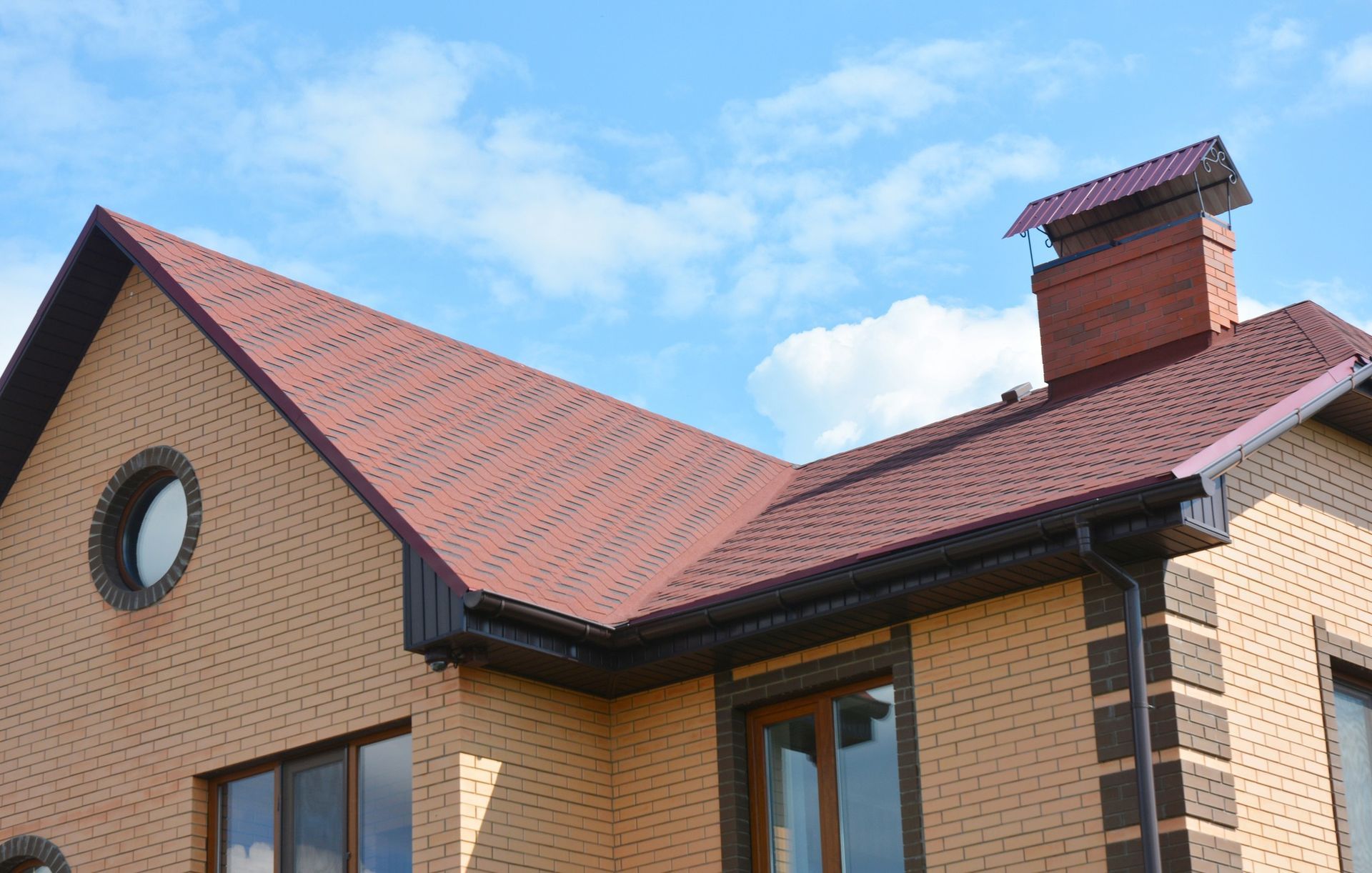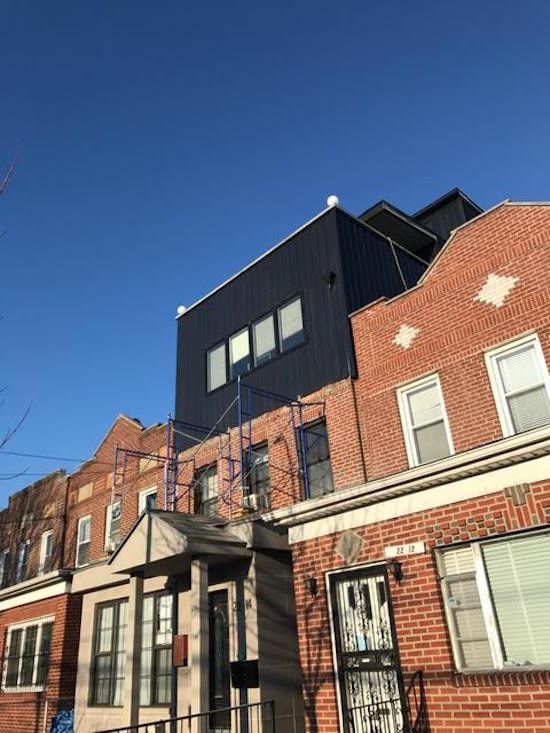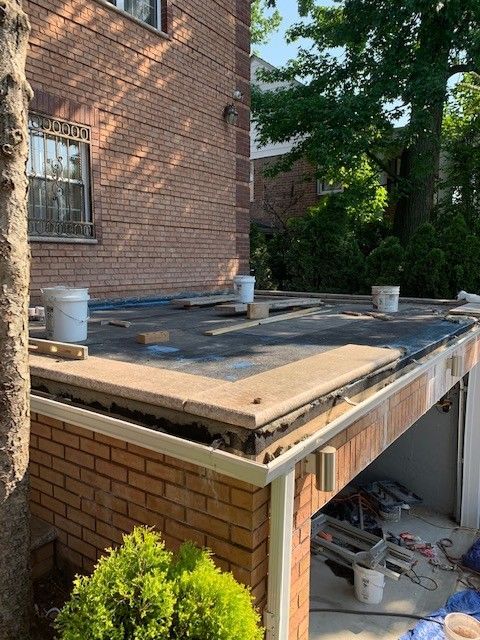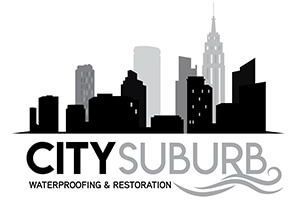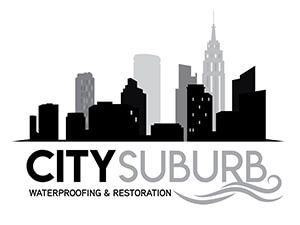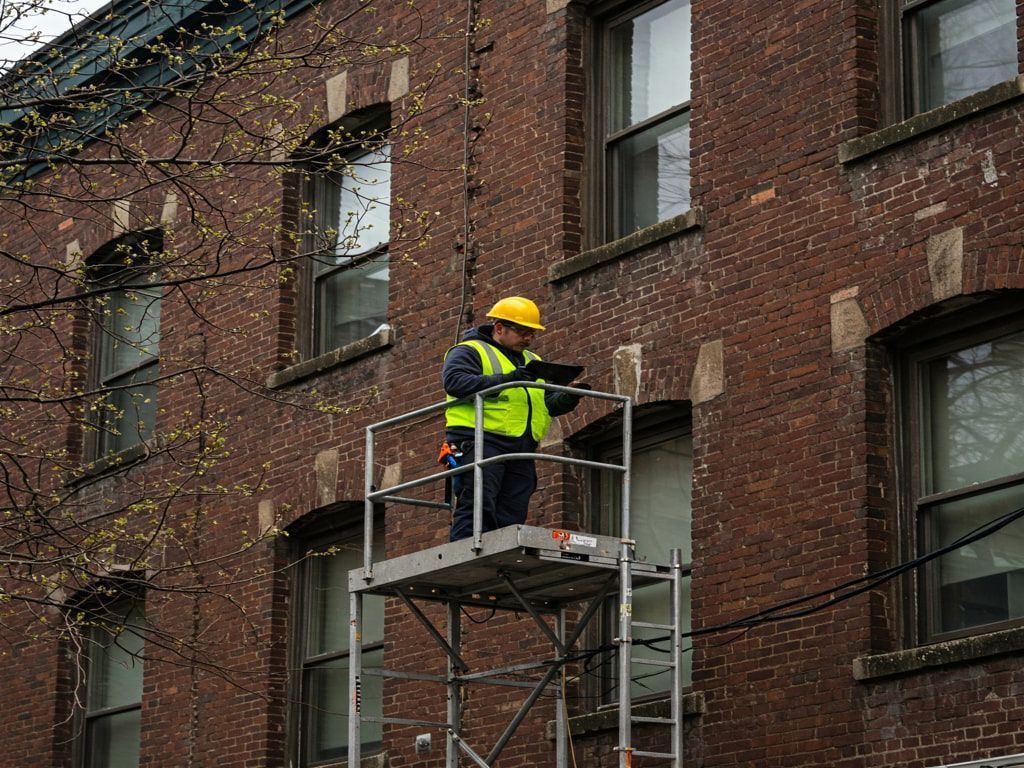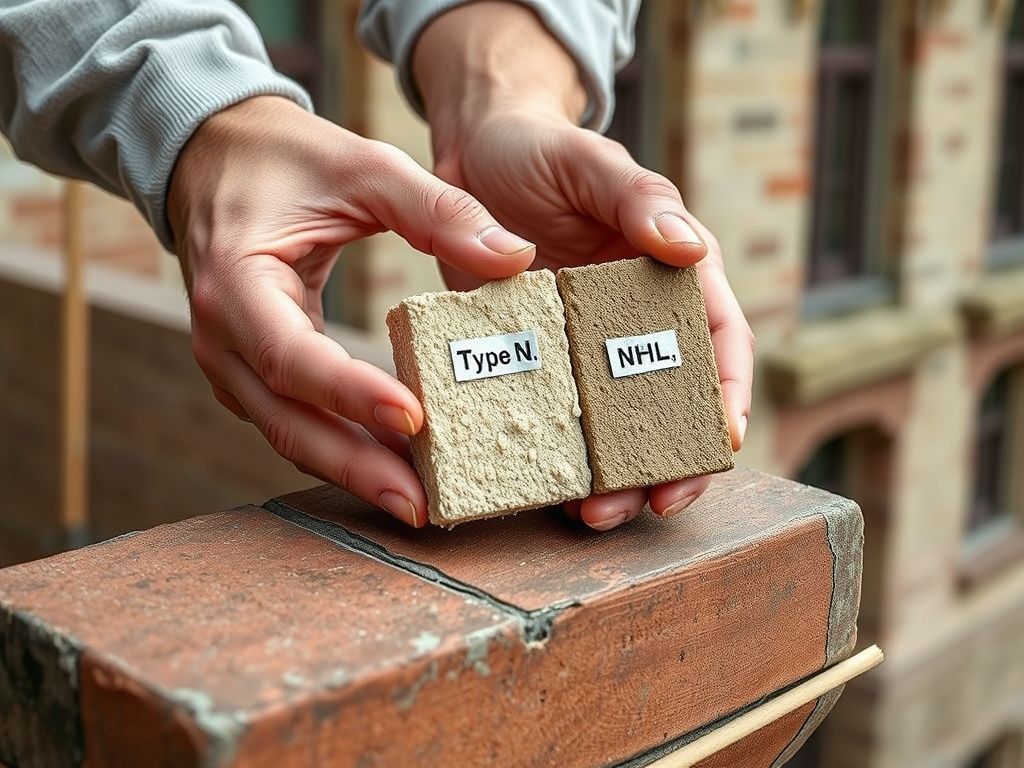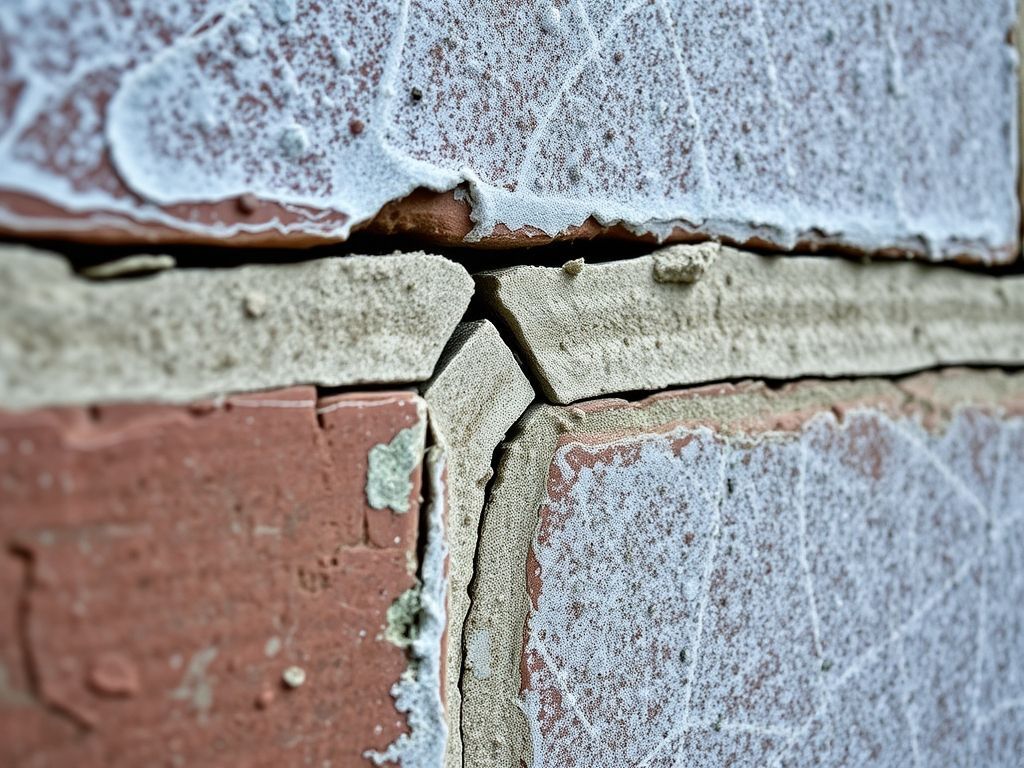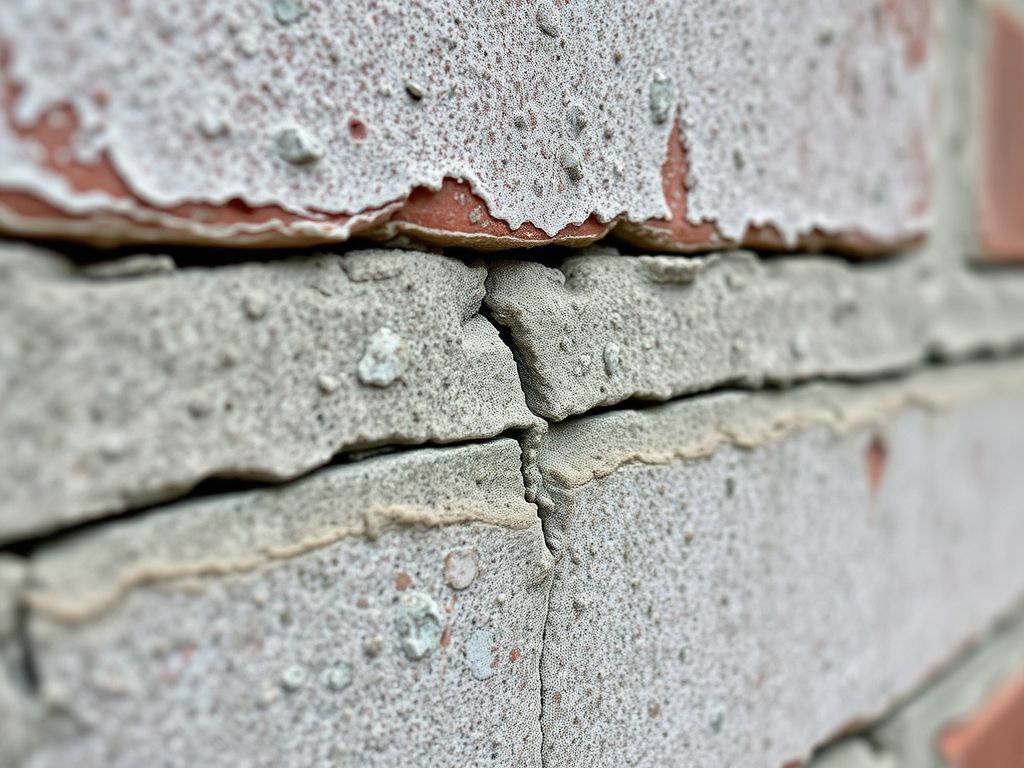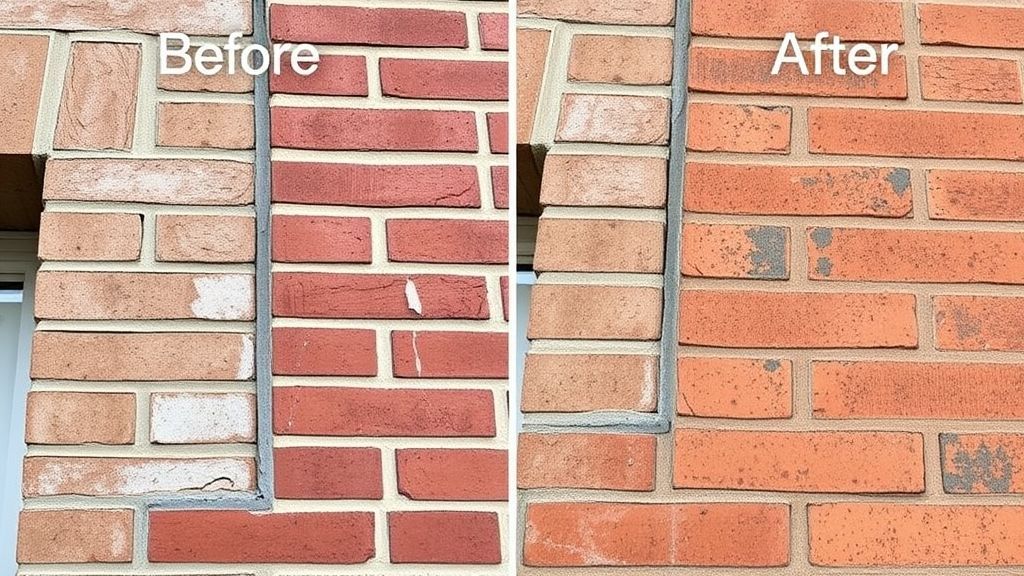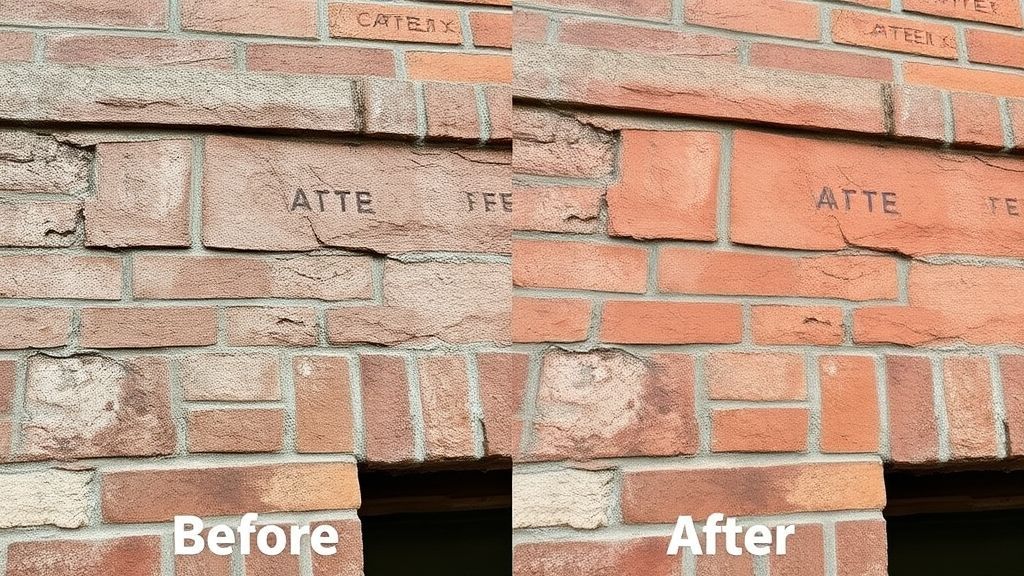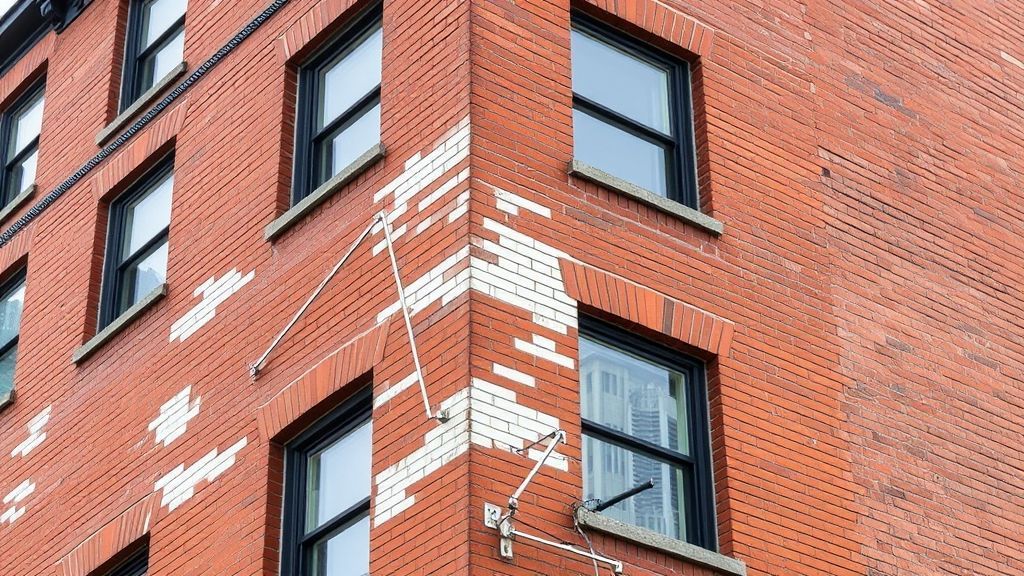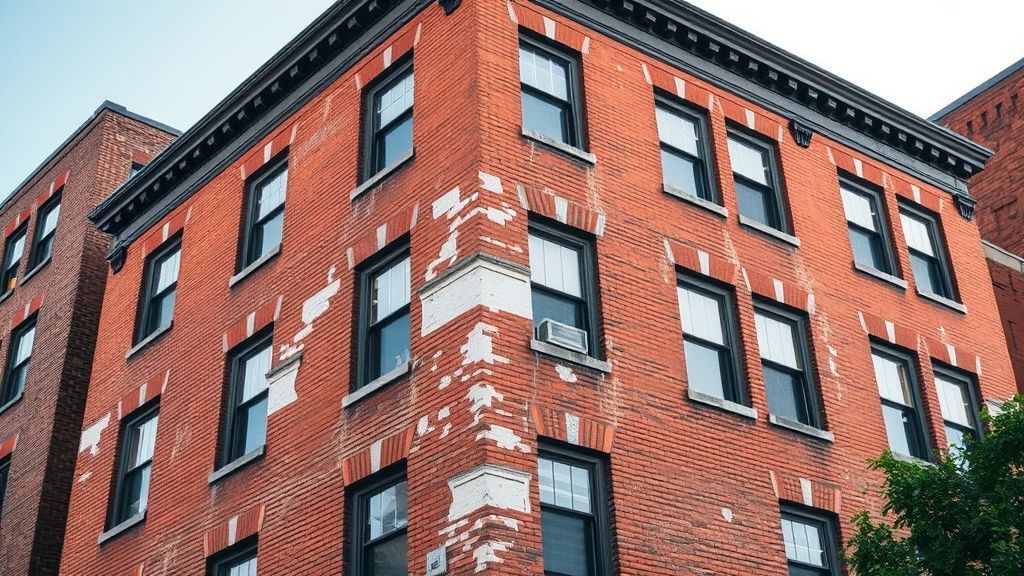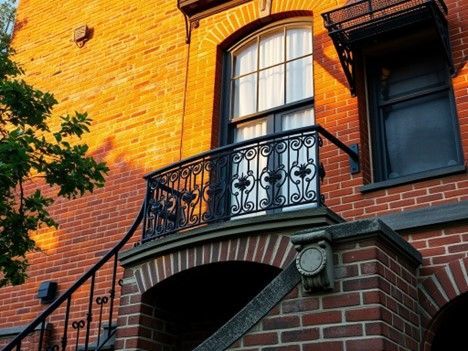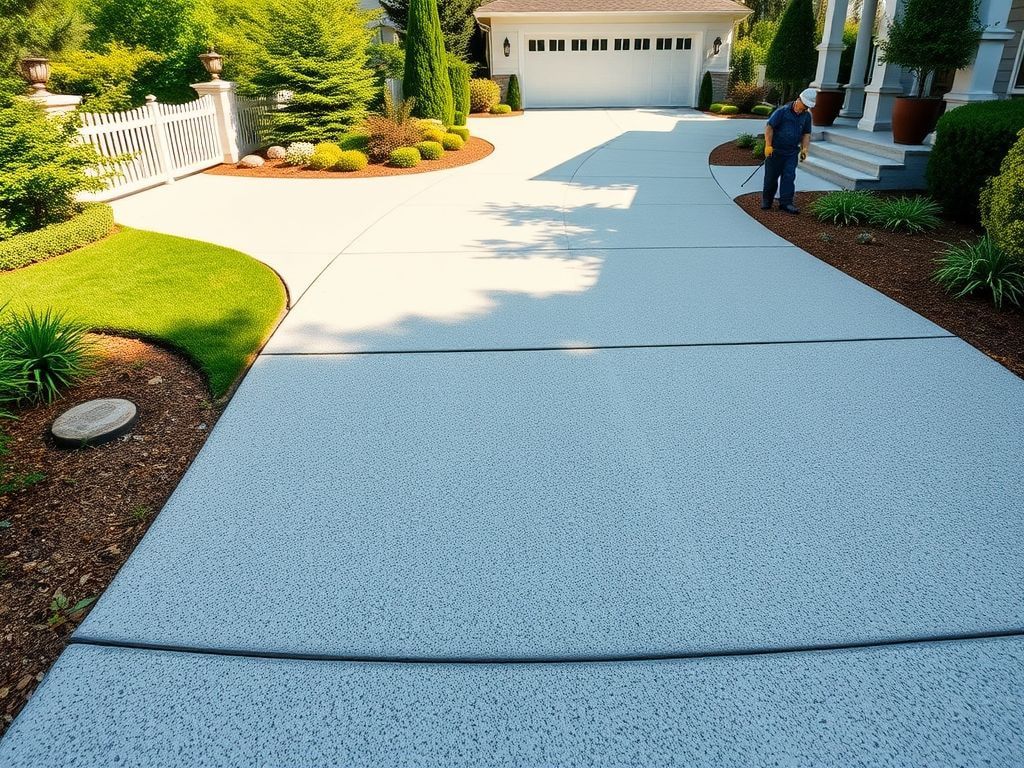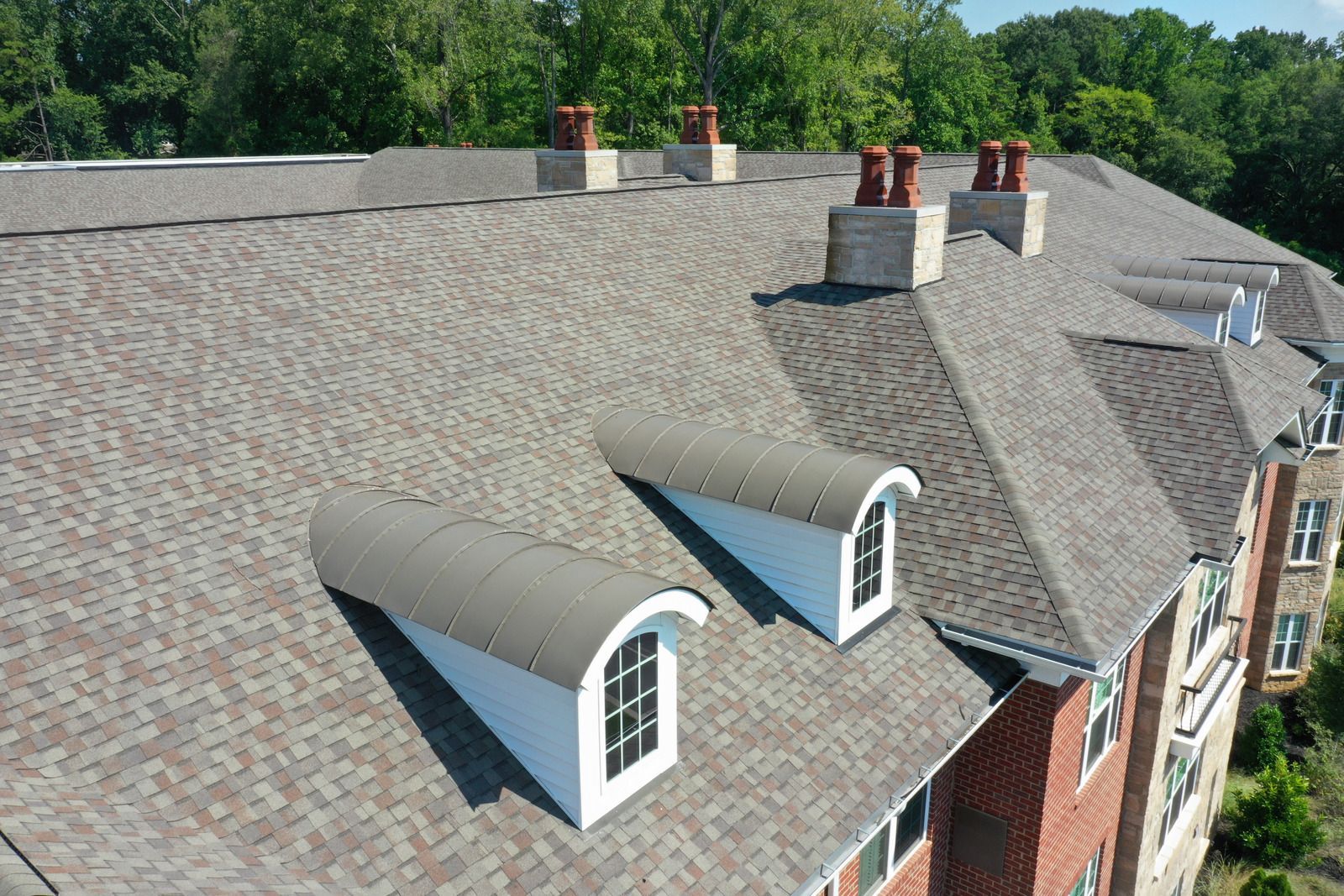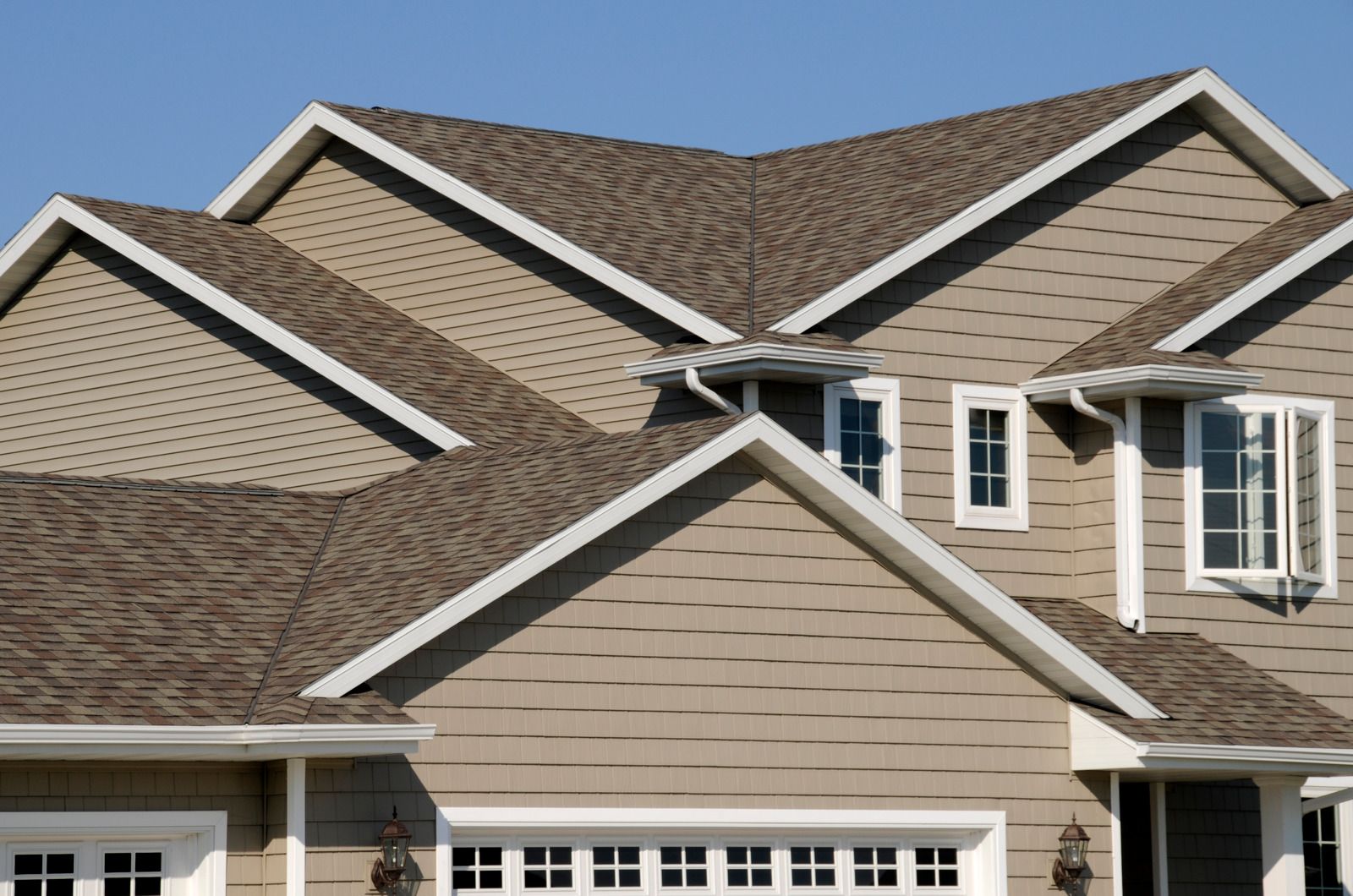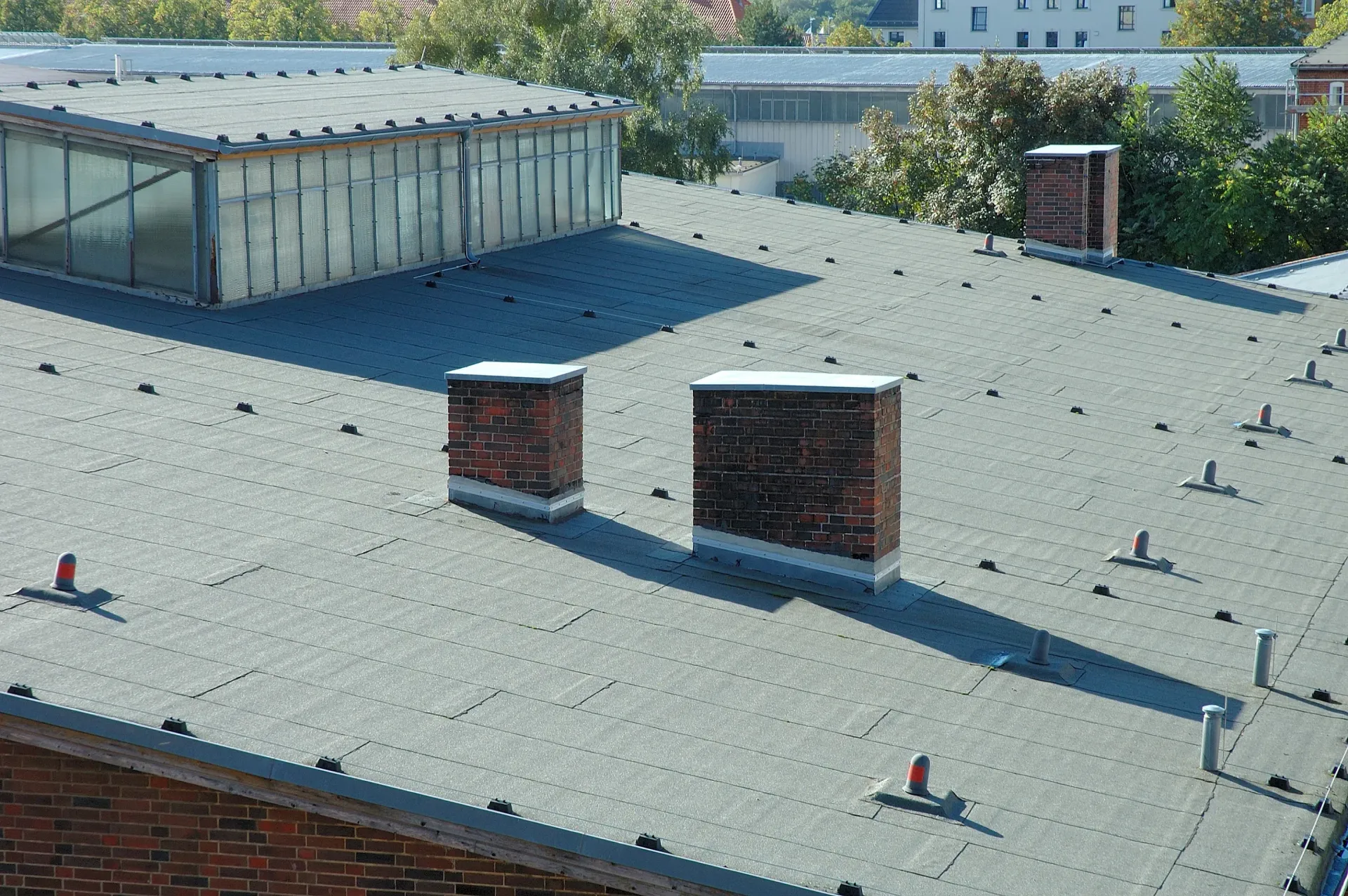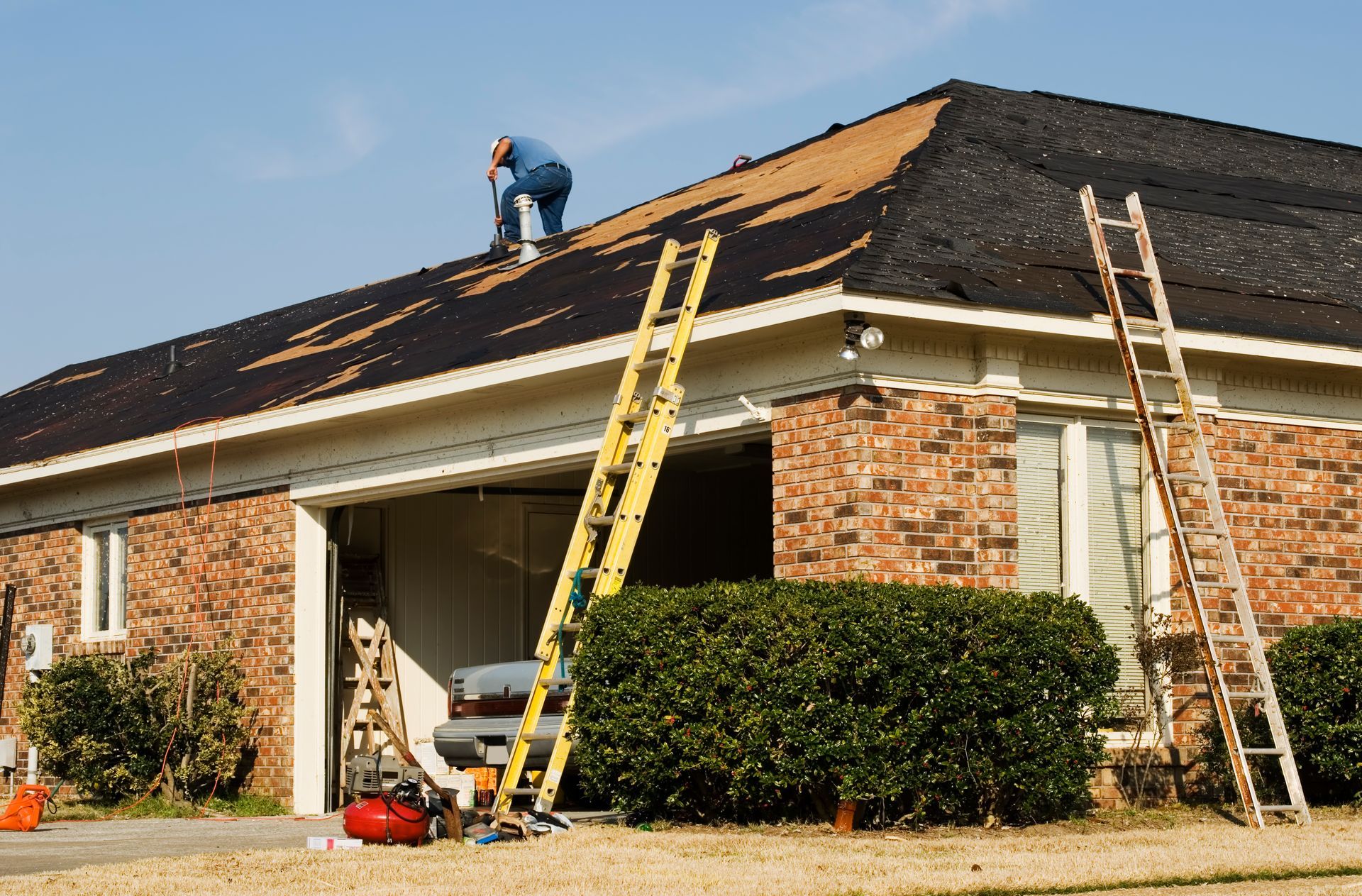Essential Brick Pointing Warning Signs: Safeguarding Your Property Before Major Damage Sets In
Article at a Glance:
- Commercial properties in Long Island face accelerated masonry deterioration due to coastal climate conditions, with early warning signs including cracked mortar, efflorescence, and brick displacement
- Deteriorated brick pointing compromises structural integrity by disrupting load distribution, weakening wall stability, and creating vulnerabilities in the building envelope that lead to moisture problems
- The cost difference between preventative brick pointing maintenance and emergency repairs after severe deterioration makes early intervention significantly more economical
- Implementing a systematic assessment approach with regular visual inspections, simple on-site testing techniques, and proper documentation helps identify issues before they escalate
- Incorporating brick pointing into strategic capital improvement planning rather than treating it as an emergency expense protects property value, maintains tenant satisfaction, and reduces liability exposure
For Long Island commercial property managers, brick pointing is not merely cosmetic but a critical component of building structural integrity that requires proactive management to prevent costly repairs and business disruptions.
When managing commercial properties in Long Island, brick pointing often falls into the category of "out of sight, out of mind" maintenance issues. Yet this seemingly minor aspect of building upkeep can lead to structural problems when warning signs are overlooked. For commercial property managers and facility directors across Nassau and Suffolk counties, the cost difference between preventative maintenance and emergency repairs grows significantly over time.
Many commercial buildings in Long Island experience accelerated masonry deterioration due to the coastal climate. Salt air, freeze-thaw cycles, and seasonal temperature fluctuations create conditions conducive to mortar deterioration. These issues reveal themselves through subtle indicators that, when caught early, can reduce repair costs and prevent business disruption for tenants.
Recognizing these early warning signs relates directly to risk management, asset protection, and tenant satisfaction. This guide explores how to identify these warning signs before they become emergency repair situations that could pose safety risks to tenants and disrupt business operations.
Critical Visual Warning Signs of Pointing Failure
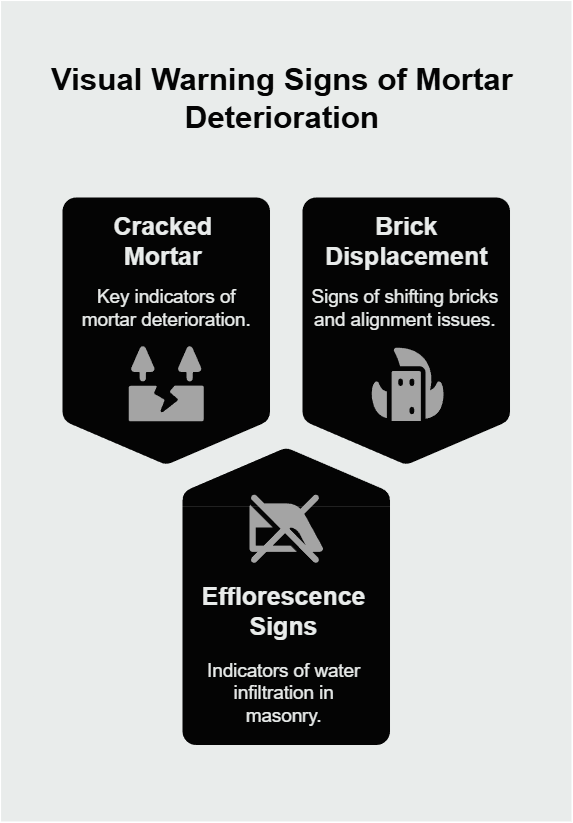
For Long Island's commercial buildings, mortar deterioration presents distinctive patterns due to the coastal environment. When examining your building's exterior, watch for these key indicators:
Cracked, Missing, or Crumbling Mortar
One of the most obvious yet often overlooked warning signs is visible deterioration of the mortar joints themselves. During inspections, pay particular attention to:
- Recessed mortar lines that have eroded below the face of the bricks
- Crumbling or sandy texture when lightly touched
- Visible cracks running through mortar joints, especially stair-step patterns
- Complete mortar loss in sections, leaving gaps between bricks
These conditions are particularly common near rooflines and around windows, where water exposure is highest during northeastern coastal storms.
Efflorescence and Water Penetration Indicators
The white, chalky substance often seen on brick surfaces isn't merely cosmetic—it's an important warning sign of water infiltration. In coastal areas, efflorescence appears more prominently after winter storms and spring thaws.
Look for:
- White, powdery deposits on brick surfaces
- Damp patches on interior walls that correspond to exterior masonry
- Rust stains tracking down from metal elements embedded in the masonry
- Green or black organic growth in mortar joints, indicating trapped moisture
These water-related signs need attention particularly for commercial properties in historic districts and waterfront locations, where winter storms drive rain and snow against buildings with significant force.
Brick Displacement and Alignment Issues
When mortar fails, bricks begin to shift. This movement might seem minor initially but can accelerate structural damage. During your inspection, check for:
- Bulging sections of brickwork that deviate from the wall plane
- Uneven brick alignment where previously uniform courses no longer line up
- Widening joints between certain bricks compared to surrounding areas
- Bricks that protrude from the facade surface
In older commercial properties, these displacement issues often appear first on southern and western exposures, where sun damage combines with moisture infiltration to accelerate deterioration.
When caught early, these visual indicators allow for targeted brick pointing rather than comprehensive rebuilding. For commercial properties, this can mean the difference between a maintenance expense and a capital investment.
Beyond the Surface: Underlying Structural Concerns
The visible deterioration of pointing is merely the symptom of potentially more serious structural issues developing within your building's walls. Understanding these connections helps property managers make informed decisions about the urgency and scope of necessary repairs.
Connection Between Pointing Failure and Wall Stability
Mortar joints don't just fill spaces between bricks—they transfer and distribute loads throughout the wall system. When pointing fails, this load-bearing function becomes compromised in ways that affect the entire structure:
- Load distribution becomes uneven, creating stress concentrations that can affect structural stability
- Lateral stability decreases, making walls more vulnerable to wind forces (particularly concerning during hurricane season)
- Support for lintels and structural elements embedded in the masonry becomes compromised
- Seismic resistance diminishes—a growing concern as building codes increasingly address earthquake preparedness
For multi-story commercial properties, the consequences of compromised load distribution can be particularly significant, as compressive forces from upper floors concentrate stress on weakened areas.
Impact on Building Envelope Integrity
The building envelope serves as your property's first line of defense against the elements. Deteriorated pointing creates vulnerabilities that extend beyond the masonry itself:
- Thermal efficiency decreases as air infiltration increases through compromised joints
- Water barriers become less effective, allowing moisture to penetrate deeper into the building structure
- Insulation performance suffers as materials become damp and lose effectiveness
- Energy costs rise—particularly significant for businesses already facing high utility rates
For buildings along coastal areas, salt-laden air makes this envelope breach more problematic, accelerating corrosion of metal components within the wall system once moisture has gained entry.
Relationship to Interior Moisture Problems
Perhaps the most immediate business impact comes from how pointing failure affects interior conditions:
- Tenants report persistent musty odors that pose potential health concerns
- Staining appears on interior walls, often misdiagnosed as plumbing leaks
- Electronic equipment experiences higher failure rates due to increased humidity
- Inventory damage becomes more common in retail and warehouse spaces
When facility managers track tenant complaints, they often miss the connection between these interior issues and exterior masonry deterioration. This disconnect leads to treating symptoms rather than addressing the root cause.
Assessment Techniques for Property Professionals
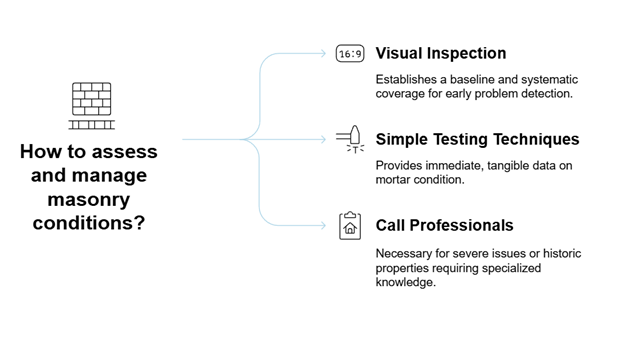
Developing a systematic approach to masonry assessment empowers commercial property teams to identify problems before they escalate into major structural concerns.
Visual Inspection Protocols and Documentation Methods
Effective masonry assessment begins with structured visual inspection:
- Create a comprehensive baseline record: Take high-resolution photographs of all building elevations during clear weather. Label images with date, time, and specific building section. Store these in a cloud-based system accessible to your maintenance team.
- Implement a grid system: Divide building facades into numbered sections on architectural drawings (A1, A2, B1, B2, etc.). This ensures systematic inspection coverage and provides clear location references for documenting issues.
- Develop a seasonal inspection schedule: Conduct biannual inspections at minimum—after winter freeze-thaw cycles (early spring) and before winter weather returns (early fall). For coastal properties, add post-storm inspections for buildings directly exposed to strong winds and salt spray.
- Use a standardized rating system: Create a 1-5 scale for mortar joint condition (1=excellent, 5=critical failure) with clear descriptors for each rating. This enables consistent tracking of deterioration over time and helps prioritize repairs.
When photographing, focus on:
- North-facing walls, which stay damp longer
- Areas beneath window sills and roof edges
- Locations where different materials meet the masonry
- Previous repair areas
Simple Testing Techniques for On-Site Evaluations
Beyond visual inspection, simple field tests can provide valuable information about mortar condition:
- Tap testing: Using a metal tool, gently tap mortar joints. Solid mortar produces a clear ringing sound, while deteriorated mortar sounds dull or hollow.
- Scrape testing: Using a key or screwdriver, lightly scrape the mortar surface. Severely deteriorated mortar will powder easily.
- Water absorption check: After rainfall, document how quickly masonry dries using timed photographs (1 hour, 3 hours, 24 hours after rain). Areas that remain damp long after others have dried indicate potential water infiltration issues.
- Infrared thermography: For larger properties, consider renting or purchasing basic infrared cameras (available for $200-500) to identify moisture infiltration patterns not visible to the naked eye.
Commercial properties in flood-prone areas should consider more frequent testing, as the combination of flooding events and subsequent salt deposits accelerates mortar deterioration.
When to Call in Specialized Masonry Professionals
While in-house assessment provides valuable early warning, certain conditions warrant professional evaluation:
- Structural movement indicators: Any bulging, leaning, or separation in masonry walls
- Widespread mortar failure: When more than 25-30% of visible joints show deterioration
- Pattern cracking: Especially stair-step cracks through multiple joints
- Previous unsuccessful repairs: Areas where prior brick pointing work has failed prematurely
- Historic properties: Buildings in historic districts require specialized knowledge of historic materials and techniques
Professional assessments typically cost between $1,500-$3,000 for mid-sized commercial properties in Long Island. For properties over 50 years old, request mortar analysis to determine appropriate replacement materials that match the original mortar's composition and performance characteristics.
Business Impact Analysis of Pointing Deterioration
Understanding the financial implications of deferred pointing maintenance helps property managers make compelling cases for preventative action. For commercial properties, these impacts extend beyond repair costs into multiple business dimensions.
Cost Progression of Delayed Maintenance
The financial impact of postponing pointing maintenance follows a predictable pattern that increases over time:
- Early intervention (minor repointing of affected areas): $3-7 per square foot
- Moderate deterioration (comprehensive repointing): $12-18 per square foot
- Severe deterioration (including brick replacement and structural repairs): $30-45+ per square foot
These costs can vary based on:
- Type of brick and mortar (colonial-era buildings with soft lime mortar, mid-century structures with portland cement blends, or modern construction with engineered mortar formulations)
- Complexity of the brickwork (corbelled cornices, decorative arches, herringbone patterns, or intricate soldier courses)
- Specific location within Long Island (costs vary between Nassau and Suffolk counties)
- Labor considerations (union vs. non-union)
A building requiring $30,000 in pointing work today may face significantly higher costs if addressed 18-24 months later, as water infiltration damages supporting structures and interior finishes.
For commercial properties in premium areas such as Garden City business district, Huntington village center, or waterfront commercial zones in Port Washington, these costs typically run 15-20% higher than county averages due to stricter aesthetic requirements and limited contractor access.
Insurance and Liability Considerations
Insurance carriers evaluate maintenance practices when considering claims related to building envelope failures:
- Insurance coverage for deterioration often depends on maintenance history and specific policy terms
- Policy language frequently addresses masonry deterioration related to "wear and tear"
- Liability coverage for incidents related to masonry typically considers maintenance records
- Premium adjustments may follow claims related to water damage from envelope failures
Documentation of regular pointing inspections and maintenance provides important evidence during claims processes. Some insurance carriers now specifically request masonry inspection reports during annual renewals.
Tenant Retention Implications
Beyond direct repair costs, exterior deterioration significantly impacts business relationships with tenants:
- Retail tenants report customer perception issues when operating in visibly deteriorating buildings
- Professional service tenants cite client impressions as a key factor in lease renewal decisions
- Negotiating leverage weakens during lease renewals when building conditions are visibly declining
- CAM (Common Area Maintenance) charge disputes increase when tenants perceive inadequate building upkeep
In competitive commercial districts, building condition often becomes the deciding factor when tenants are considering renewals or relocations.
Developing a Strategic Pointing Maintenance Program
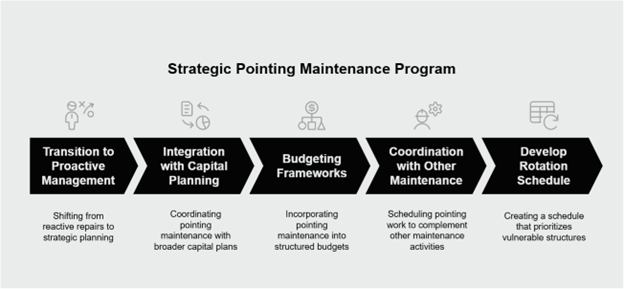
Transitioning from reactive repairs to proactive management requires strategic planning that accounts for unique climate challenges while addressing business operational needs.
Integration with Capital Improvement Planning
Effective pointing maintenance doesn't exist in isolation—it must be coordinated within broader capital planning:
- Align masonry assessment with overall building condition reporting
- Identify complementary projects that can share access costs (window repairs, roof edge work)
- Schedule pointing work to coincide with tenant improvement periods when possible
- Create multi-year phasing plans for larger properties to distribute costs strategically
For properties with multiple buildings, develop a rotation schedule that prioritizes the most vulnerable or visible structures while planning for comprehensive coverage over a 5-7 year cycle.
Budgeting Frameworks for Phased Maintenance
Rather than treating pointing as an emergency expense, incorporate it into structured budgeting:
- Allocate 0.5-1% of building replacement value annually for envelope maintenance
- Create dedicated reserves for masonry upkeep based on square footage
- Implement trend projections in budget forecasts that account for deterioration progression
- Consider financing approaches like Property Assessed Clean Energy (PACE) programs available in Nassau and Suffolk counties
For properties with historic significance or architectural distinction, explore preservation-focused financing options through the New York State Historic Preservation Office.
Coordination with Other Building Envelope Maintenance
Pointing work should be scheduled to complement other envelope maintenance:
- Coordinate with roof replacement or repair to address parapet walls simultaneously
- Align with window replacement projects to ensure proper flashing and sealing
- Schedule in conjunction with exterior cleaning to reveal potential problem areas
- Integrate with waterproofing system renewals for below-grade masonry
This coordination reduces overall costs through shared access equipment and mobilization expenses while ensuring comprehensive envelope performance.
For larger commercial properties in exposed areas like waterfront locations, consider breaking the building into exposure zones with different maintenance schedules based on weathering patterns.
Implementing a Proactive Approach
Masonry deterioration presents specific challenges for Long Island commercial properties due to the coastal environment, seasonal extremes, and aging building stock. By recognizing the early warning signs of pointing failure—from visible mortar deterioration to indicators of water infiltration—property managers can intervene before minor issues become structural problems.
The business case for proactive pointing maintenance is clear: early intervention costs less than emergency repairs, preserves property value, maintains tenant satisfaction, and reduces liability exposure. Implementing systematic assessment protocols helps maintenance teams identify issues before they escalate, while strategic planning allows for cost-effective maintenance integration.
For commercial property managers across Nassau and Suffolk counties, brick pointing is not merely a cosmetic concern but an important component of building structural integrity and envelope performance. By developing a structured approach to masonry assessment and maintenance, you protect your property investment while demonstrating professional diligence to ownership, tenants, and insurers alike.
Begin by documenting your current masonry condition through comprehensive photography, establishing seasonal inspection protocols tailored to Long Island's climate, and creating a phased maintenance plan that addresses the most vulnerable areas first. This proactive approach transforms pointing from an emergency expense into a manageable component of professional property management.
Frequently Asked Questions (FAQs)
Q: How does brick pointing deterioration affect overall building structural integrity?
A: Brick pointing deterioration compromises structural integrity by disrupting the load transfer system within masonry walls. In commercial buildings, this can lead to wall instability, reduced load-bearing capacity, and vulnerability to lateral forces during storms or seismic events. For multi-story properties, the risk increases as upper floor weight creates additional stress on compromised lower sections.
From a liability perspective, deteriorated pointing creates exposure for property managers, particularly in high-foot-traffic areas where falling mortar or masonry could cause injury. According to specific policy terms and the circumstances of the damage, insurance coverage may be affected when maintenance records show inadequate upkeep.
Q: What is the typical ROI timeframe for preventative brick pointing maintenance?
A: Preventative pointing maintenance typically delivers ROI within 3-5 years through avoided emergency repairs alone. When factoring in extended building lifespan, energy efficiency improvements, and tenant retention benefits, the ROI becomes more substantial.
The cost-benefit equation varies by property type. Office buildings typically see ROI through energy efficiency gains and tenant retention, while retail properties benefit primarily from improved customer perceptions and reduced business interruption. Industrial properties see the most direct ROI through prevented structural damage to high-value equipment and inventory.
Q: How should brick pointing maintenance be prioritized among other building envelope concerns?
A: Pointing maintenance should be evaluated within a comprehensive envelope management hierarchy that considers both condition urgency and systemic relationships. While roof failures often demand immediate attention due to direct water infiltration, compromised pointing represents a developing issue that can affect structural elements before becoming visibly apparent.
From a resource allocation perspective, pointing maintenance offers practical advantages: it can often be phased over multiple budget cycles, performed with minimal tenant disruption, and scheduled during shoulder seasons when other exterior work may be weather-constrained.
Q: What documentation should be maintained for brick pointing inspections and repairs?
A: Comprehensive documentation serves multiple critical functions beyond maintenance planning: it provides essential evidence for insurance claims, creates continuity through management transitions, and establishes due diligence for liability protection.
Documentation should include:
- Dated inspection reports with standardized condition ratings
- Photographic records with location references
- Repair specifications and contractor qualifications
- Materials documentation and warranty information
- Post-repair verification inspections
For larger organizations, integrating this documentation into enterprise asset management systems enables portfolio-wide analysis, while providing site-specific records for individual property managers.
Frequently Unasked Questions (FUQs)
Q: How does pointing failure contribute to regulatory non-compliance issues beyond obvious structural concerns?
A: Pointing deterioration creates several overlooked regulatory compliance considerations. Energy code compliance becomes challenging as envelope performance degrades, potentially affecting sustainability requirements in newer commercial codes. ADA accessibility can be compromised when water infiltration damages interior paths of travel or creates uneven surfaces.
Certificate of occupancy renewal can be affected during inspections when masonry deterioration is identified, particularly in municipalities that have implemented commercial property maintenance codes. This creates potential for business interruption if tenants cannot legally occupy spaces.
Documentation of regular masonry maintenance often becomes important evidence during code enforcement proceedings, demonstrating good faith efforts toward compliance even when issues are discovered.
Q: What cross-departmental impacts can brick pointing failure have within a commercial property organization?
A: Brick pointing failure creates effects across organizational departments that many management teams don't anticipate. Maintenance teams face increased emergency call volumes for interior issues actually stemming from exterior envelope failures. Leasing departments encounter negative impressions during showings when prospective tenants observe deteriorating facades. Accounting departments manage unexpected expense timing that disrupts quarterly financial projections.
The interdepartmental relationship becomes particularly challenging during budget development when different departments compete for limited resources without understanding how masonry deterioration impacts their individual objectives. Breaking down these silos through collaborative envelope planning sessions helps organizations develop more comprehensive approaches.
Q: How do insurance companies evaluate brick pointing maintenance when assessing property risk?
A: Insurance carriers serving Long Island commercial properties have increasingly detailed approaches to evaluating masonry maintenance during underwriting and claims processes. Many now specifically review pointing condition during property inspections, applying premium adjustments when deterioration is evident.
Policy language often contains specific details about "gradual deterioration" that can affect water damage claims resulting from long-term pointing failure. These considerations become particularly relevant when the issue is traced to maintenance over time rather than a specific storm event.
Proactive documentation of pointing inspections and maintenance provides valuable evidence that the property is being professionally managed, potentially influencing both coverage decisions and premium calculations during annual renewals.
Q: What are the tenant communication implications of planned pointing repairs versus emergency interventions?
A: The communication approach for pointing work significantly impacts tenant perception and satisfaction. Planned maintenance, properly communicated, positions property management as proactive and professional. Emergency repairs, regardless of communication quality, can create perceptions of reactive management.
In multi-tenant commercial buildings, lease agreements typically contain provisions for necessary repairs, but tenants' practical tolerance for disruption often differs from legal requirements. Developing strategic communication protocols that address concerns about customer access, noise, dust, and schedule predictability transforms maintenance from a tenant concern to a value demonstration.
For retail properties in particular, the staging and communication of pointing work can significantly impact customer perception and sales performance. Coordinating with tenants' marketing calendars to avoid high-traffic periods demonstrates management's business understanding beyond basic building upkeep.
Protect Your Commercial Property with Expert Brick Pointing
Don’t wait until minor mortar damage turns into costly structural issues. At City Suburb, we specialize in professional brick pointing services that enhance structural integrity, prevent brick erosion, and reduce the risk of structural collapse—all while preserving the appearance of your commercial building.
Serving Long Island, Queens, Brooklyn, Manhattan, and beyond, our skilled masonry team ensures your property remains secure and well-maintained, even in harsh coastal conditions.
⭐ "Team did a fantastic job replacing window lintels, brick pointing and some targeted coating. Ravi delivered an estimate during his initial visit and when requested, returned again as we had some concerns we wanted him to look at before we made our final decision to hire his services." – B. Kofos
📞 Don’t wait for emergency repairs—contact us today for a free estimate! Our experts are ready to assess your building and provide cost-effective solutions.
📲 Stay connected with us! Follow
City Suburb on Facebook and
Instagram for project updates and expert maintenance tips!
